3. Circular Open Source Fashion¶
Research¶
The focus of this week will be on creating modular elements to reduce the waste of fabrics.
ZERO WASTE & MORE SUSTAINABLE
"Less than 1% of all the clothes is recycled into a new garment"
The fashion industry needs a revolution:
- Need a culture of openness. Share the process and knowledge in all the ranges.
- Use a mono composition for fabrics to facilitate their recycling.
- Readopt the clothes sizes. We will have less stock.
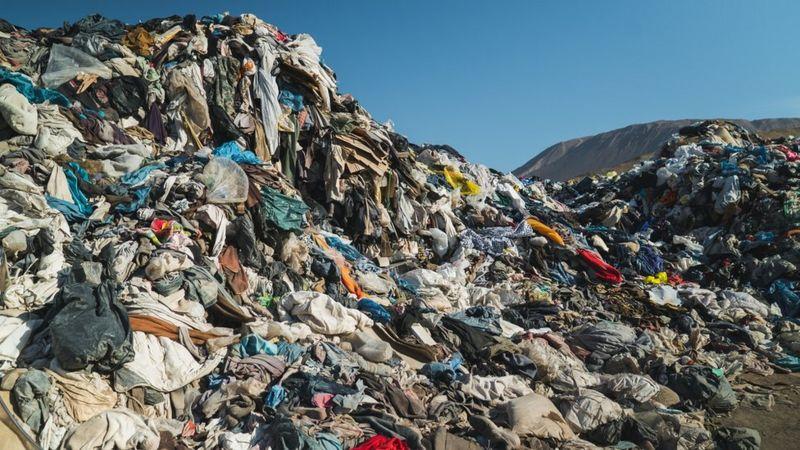

Tools¶
- Circular design for fashion by Ellen Macarthur Foundation
- Zero waste fashion design by Timo Rissanen and Holly Mc Quillan.
- Open design now
- Fabricademy Open Source Circular fashion catalogue
- Fabricademy seamless fashion catalogue
References & Inspiration¶
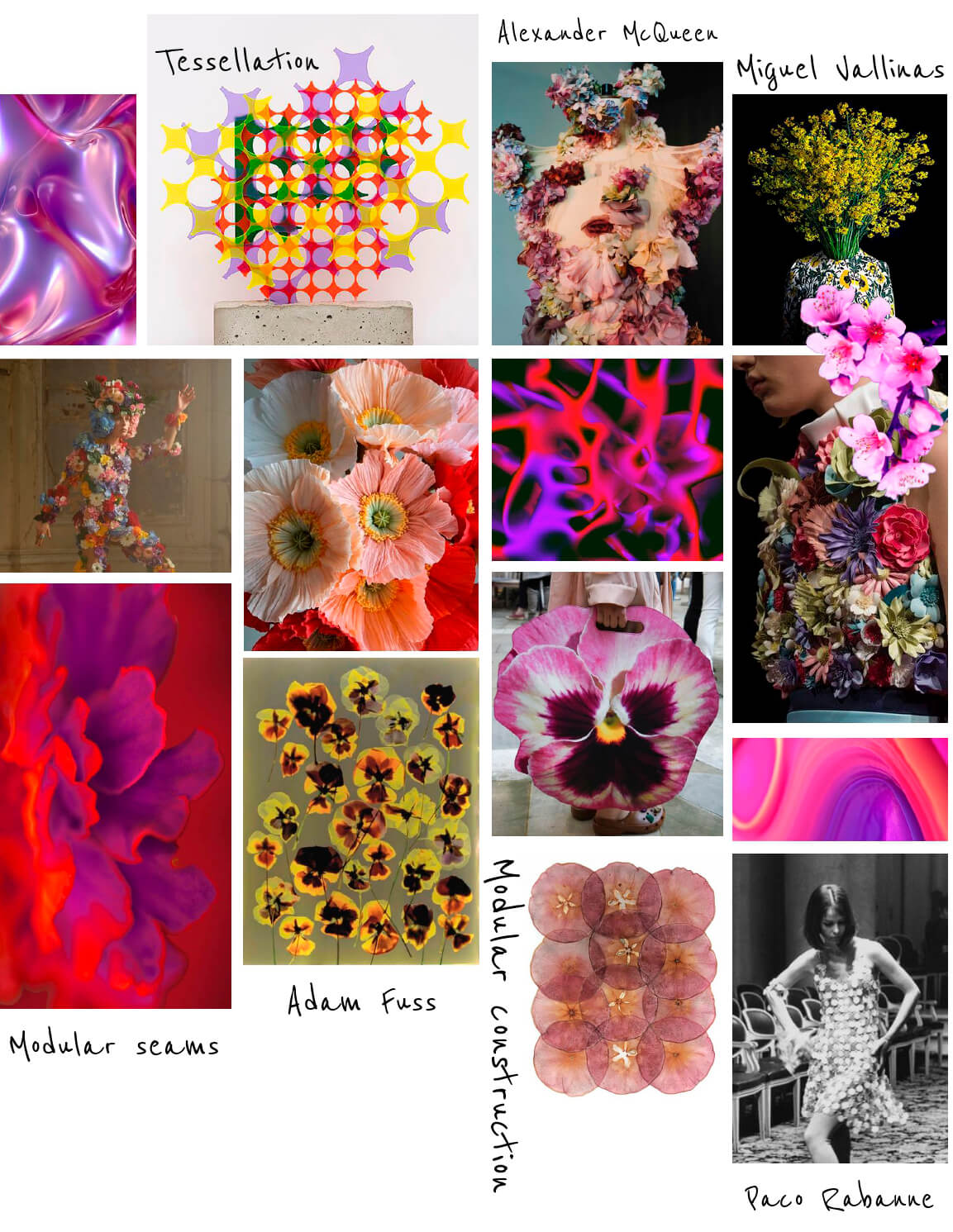
GET INSPIRED BY:
Process¶
After getting inspired by various artists and Fabricademy alumni to know the different possibilities of the modular technique, I start focusing on the organic forms and the various nestings and utilities of each form of the module.
This week I would like to design a handbag with diverse pieces and forms to get an irregular construction although it has the same repetitive sections.
2D design¶
Let's start!
- Ideas
- Paper sheet
- Scissors
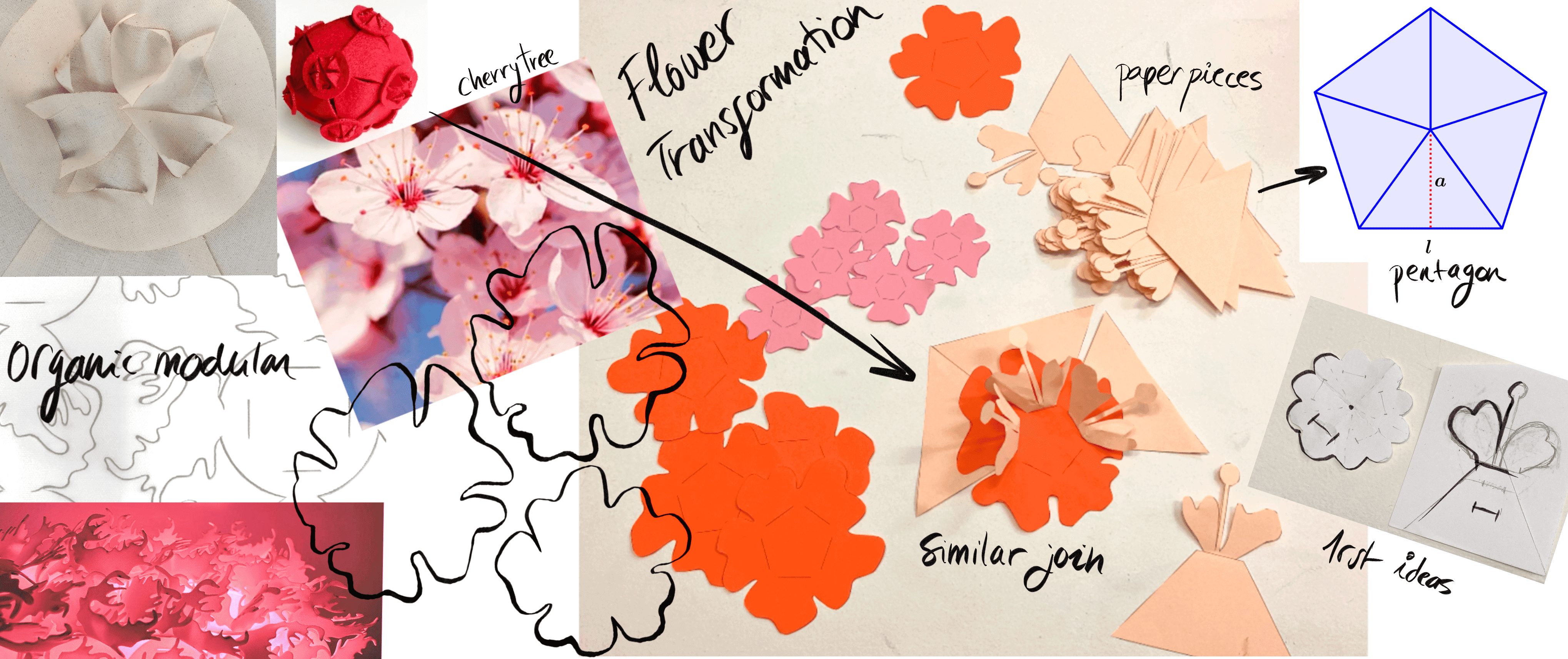
While I was playing with the geometric forms starting with a simple triangle to a pentagon I achieved a 3D figure, the dodecahedron. It simplified my idea of a modular bag.
When I get some interesting forms to try I pass the module design in Rhino 7 and create a file ready to impress on paper.
Remember to keep in mind all the distances to fit the shape in real.
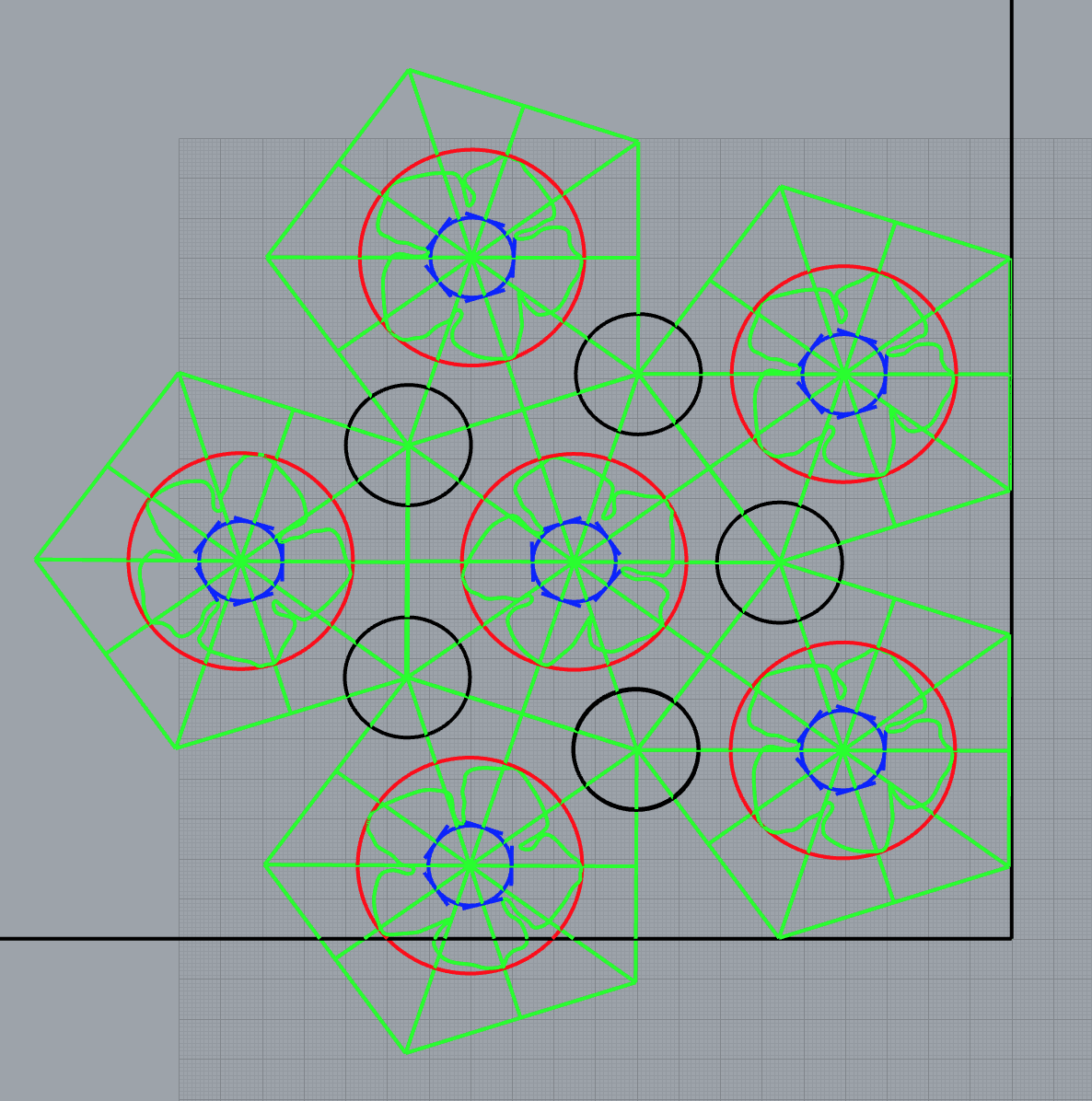
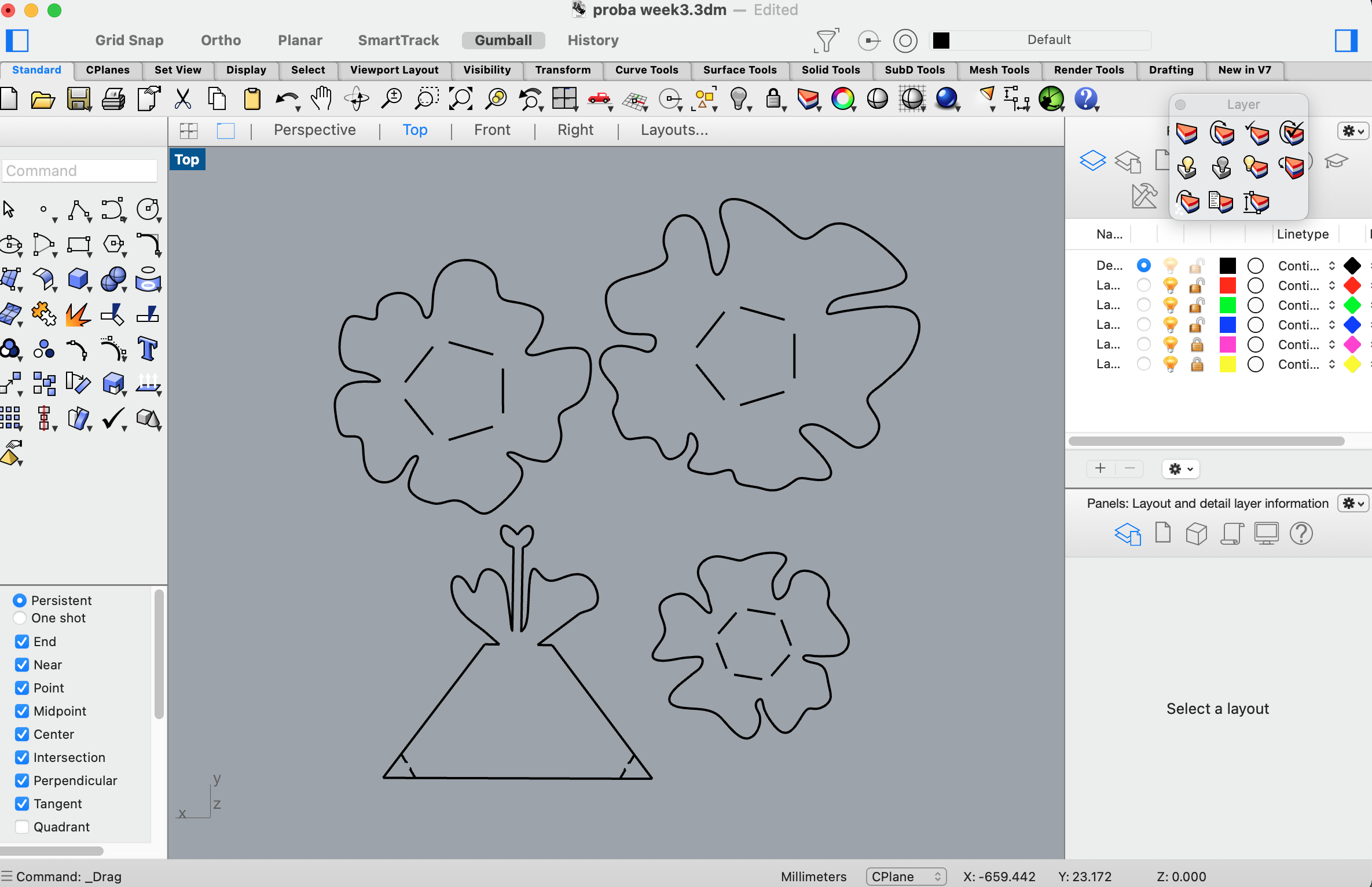

Required:
- 12 pentagons to create a dodecahedron = 60 pink triangle
- 10 red flowers
- 1 big red flower + 1 big flower with the handle
- 20 purple flowers
Testing¶
The next step after assembling the paper prototype was to pass the corrections into Rhino 7 and try the modules in the real material with the laser cutter machine. In that case, we are gonna use the neoprene red and purple of 1mm and the pink one of 0.3mm.
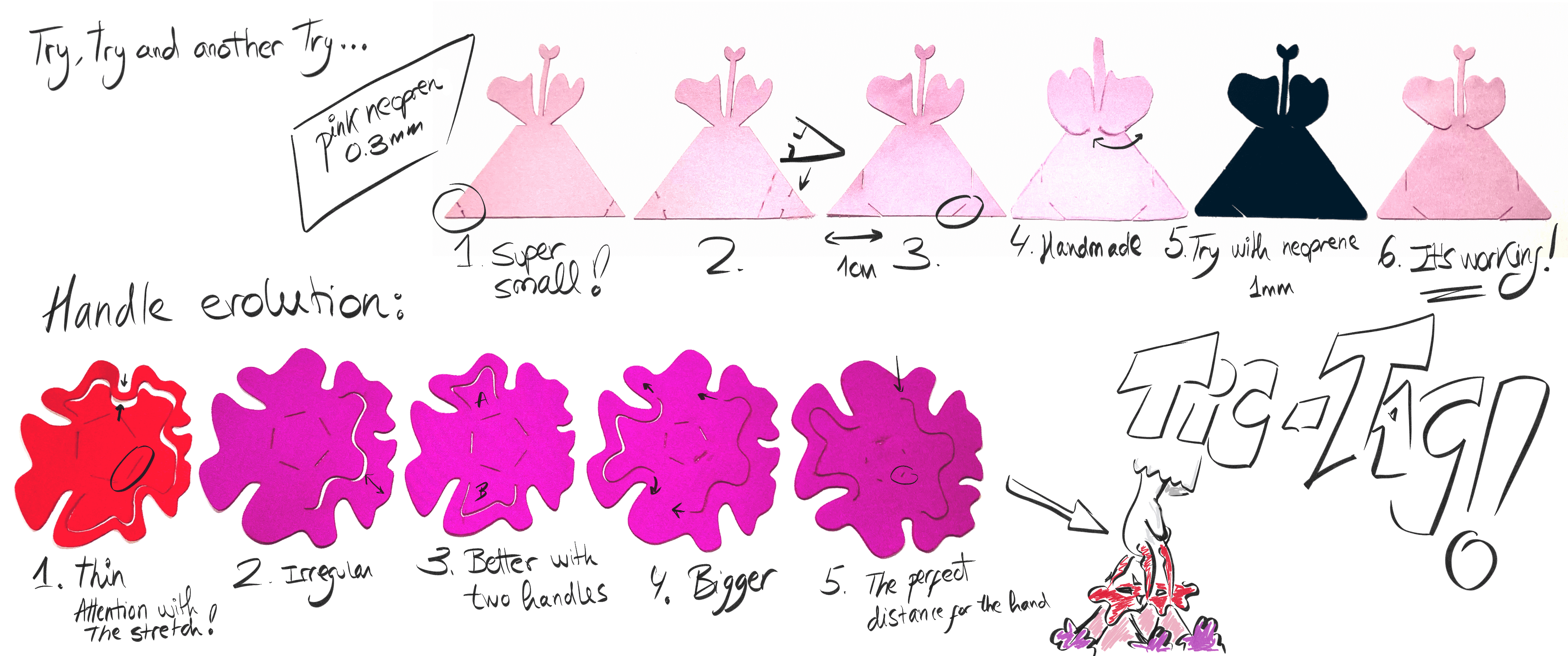
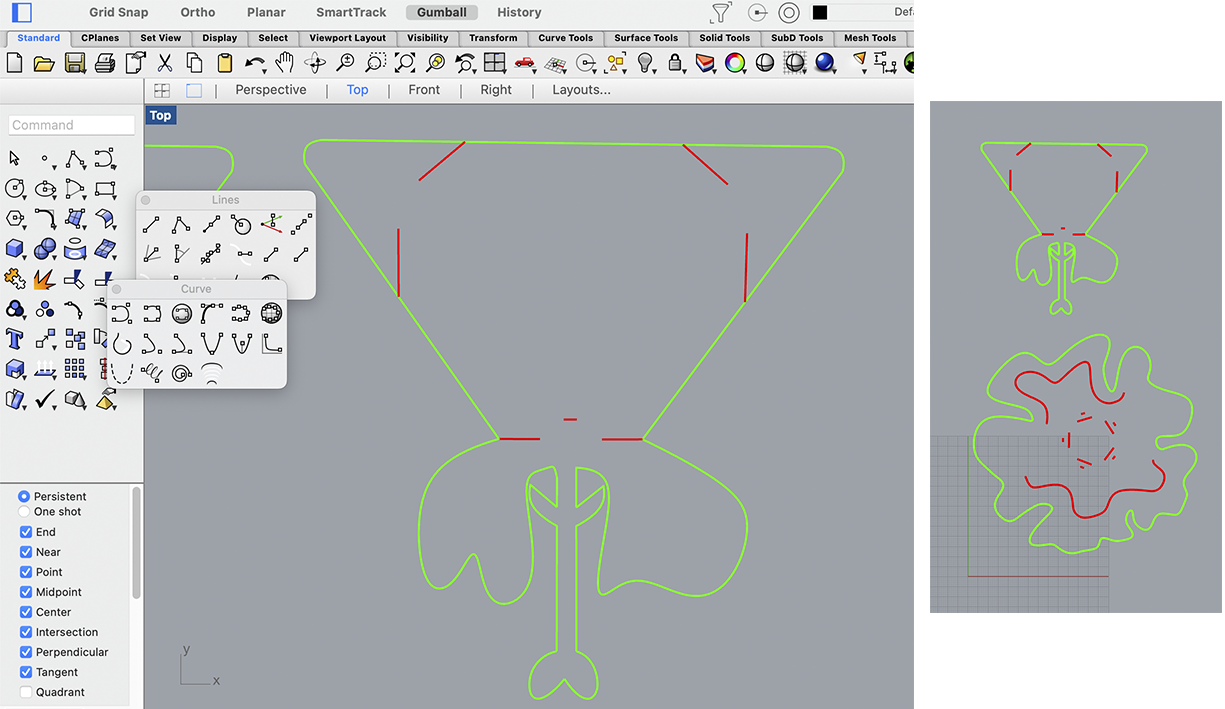
One of the solutions we got to join these modules was to do interlace, but it was disdained because it will take more time during the assembling and have a lot of elasticity.
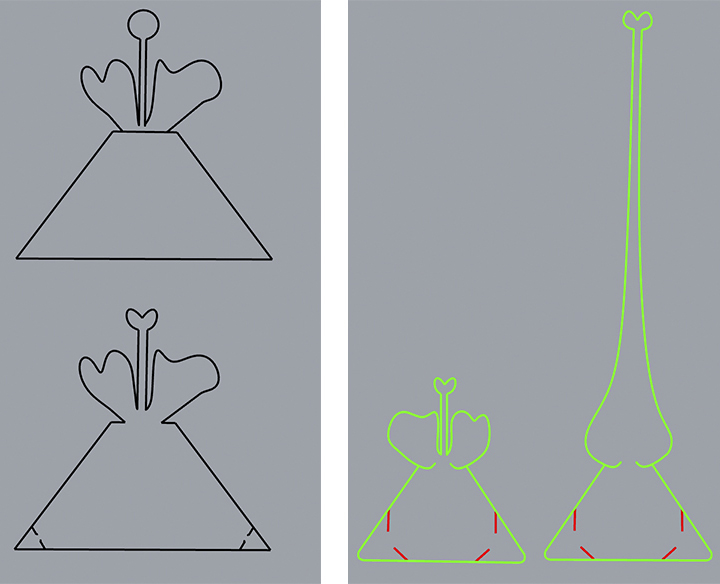

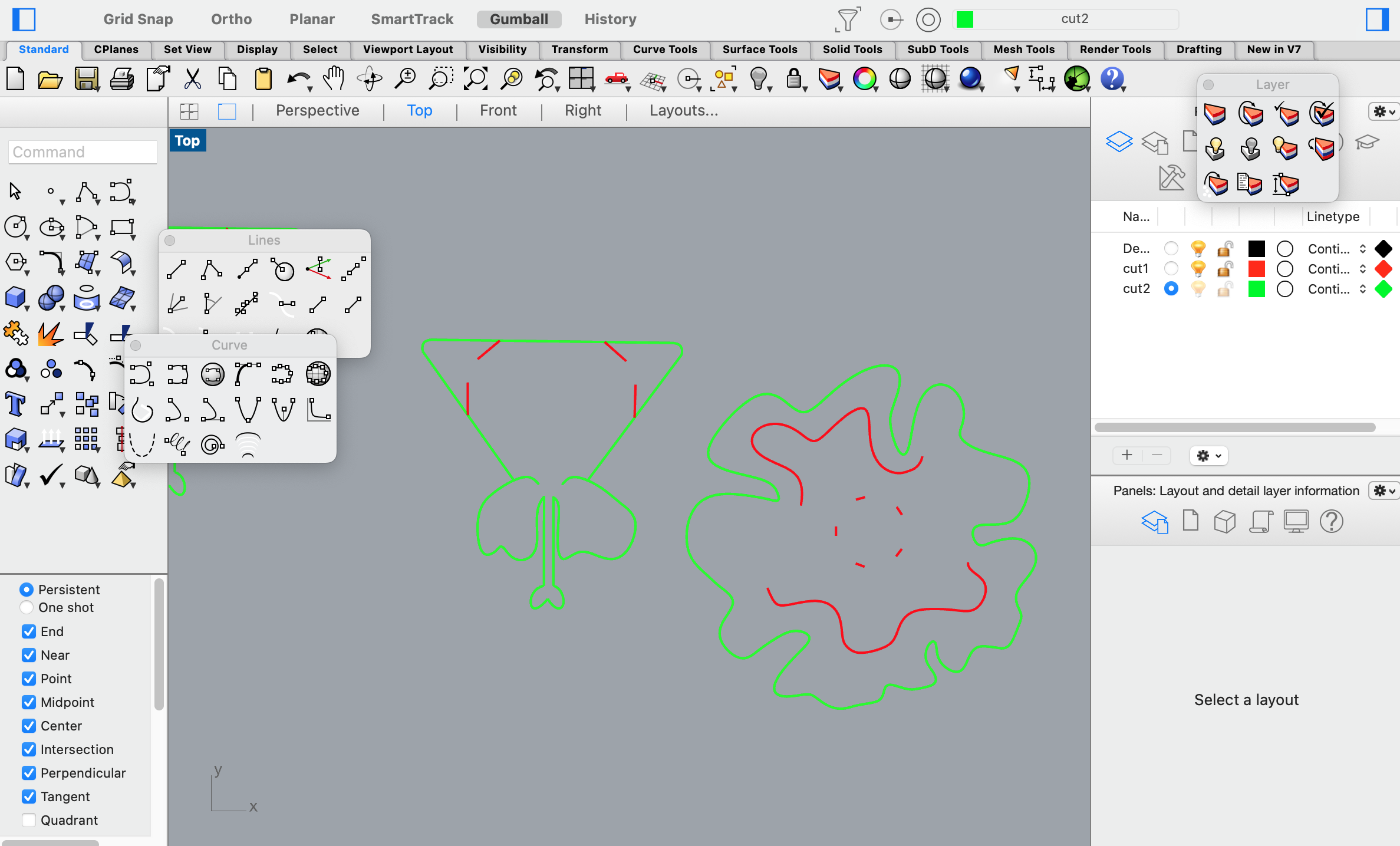
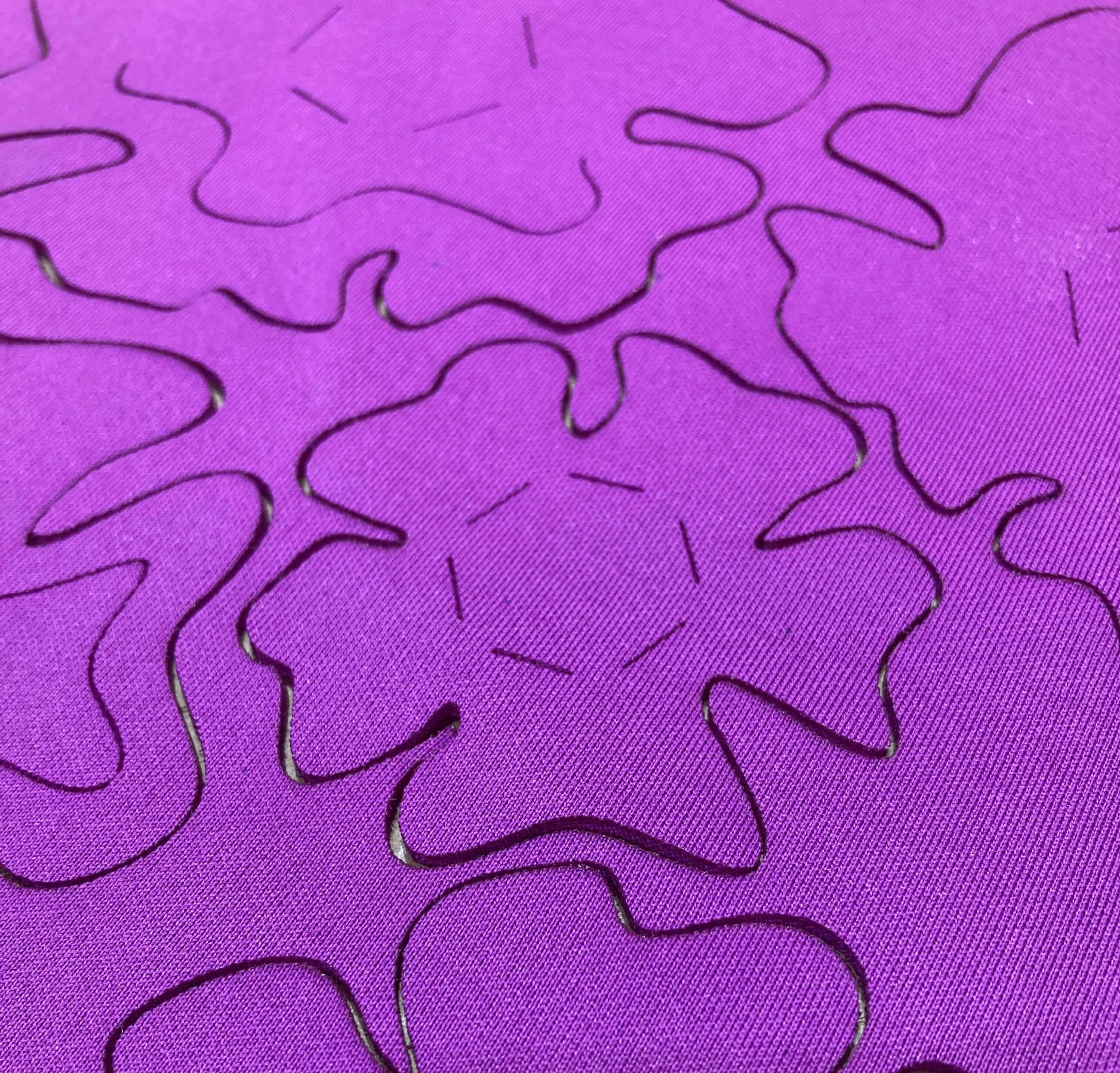

The most challenging part was to create a resistant union between the red flower and the pink triangle because have different thicknesses and need a tiny hole but enough to pass the leaves of the piece.
Another trouble to solve was the handle, at first I try with just one, but the cut has to be large to pass the hand and for the usage, it starts stretching too much. So it's not going to be a hard-wearing bag. As a solution, I design two handles more consistently, without forgetting about the stretchable neoprene.
The components of the bag have an organic shape so it's not the most optim option to reduce the waste material, however, with the different rectangles of each color that we use, we colud do another totebag with the die cutting of the flowers as texture for that bag.

HOW MUCH FABRIC ARE WE REQUIRED TO MAKE THE BAG?
The area we need for:
-
Pink flower triangle: 3513 mm2 x 60 pieces = 210.780 mm2
-
Purple flower: 2566 mm2 x 20 pieces = 51.320 mm2
-
Red flower: 4640 mm2 x 10 pieces = 46400 mm2
-
Red handle/big flower: 8067 mm2 x 2 pieces = 16134 mm2
-
Pink triangle to close the bag: 4910 mm2 x 5 pieces = 24550 mm2
Total area required for all the components to construct the bag = 349,184 mm2
If we calculate the fabric rectangle that we will need for each pattern, the approximate total area result is = 620212 mm2
So, 620212 mm2 - 349,184 mm2 = 271.028 mm2 of waste material
To calculate the area of each piece I used the Area command in Rhino. In case you could not select the lines of your design, make sure it is a plane, use the Make 2D command to achieve it.
Laser cutting¶
Step by step:
-
After turning on the laser cutting machine and the air extractor, lay the fabric on the bed and readjust the distance with the plastic tool.
-
Open your file in Rhino 5, select the objects that you are going to cut, and press control + P to print. Move to fit.
-
Check the thickness of the materials and select or adjust the grid of the laser cutting program. Also the color order for the cuts.
REMEMBER: Never cut your final file without testing.
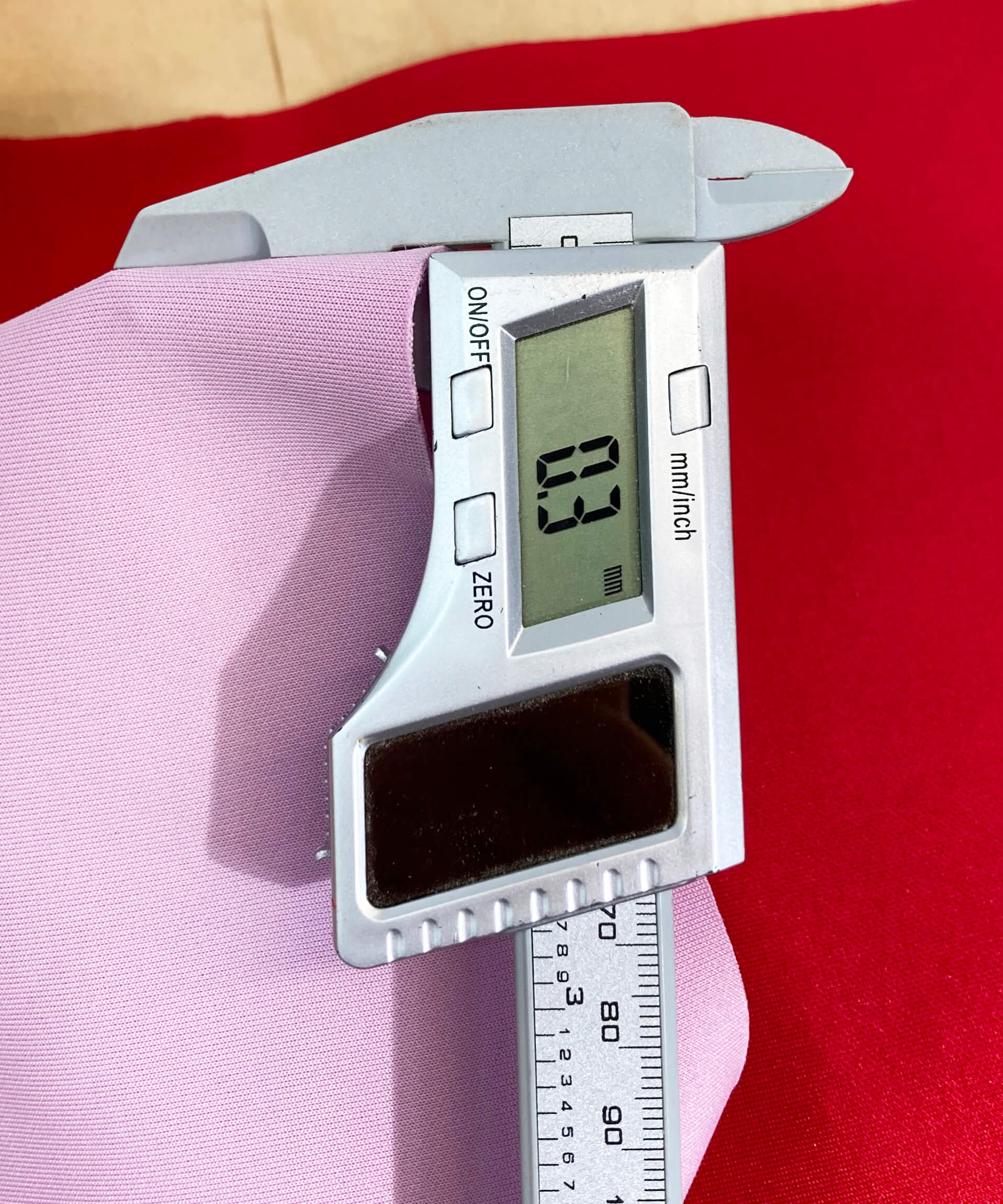
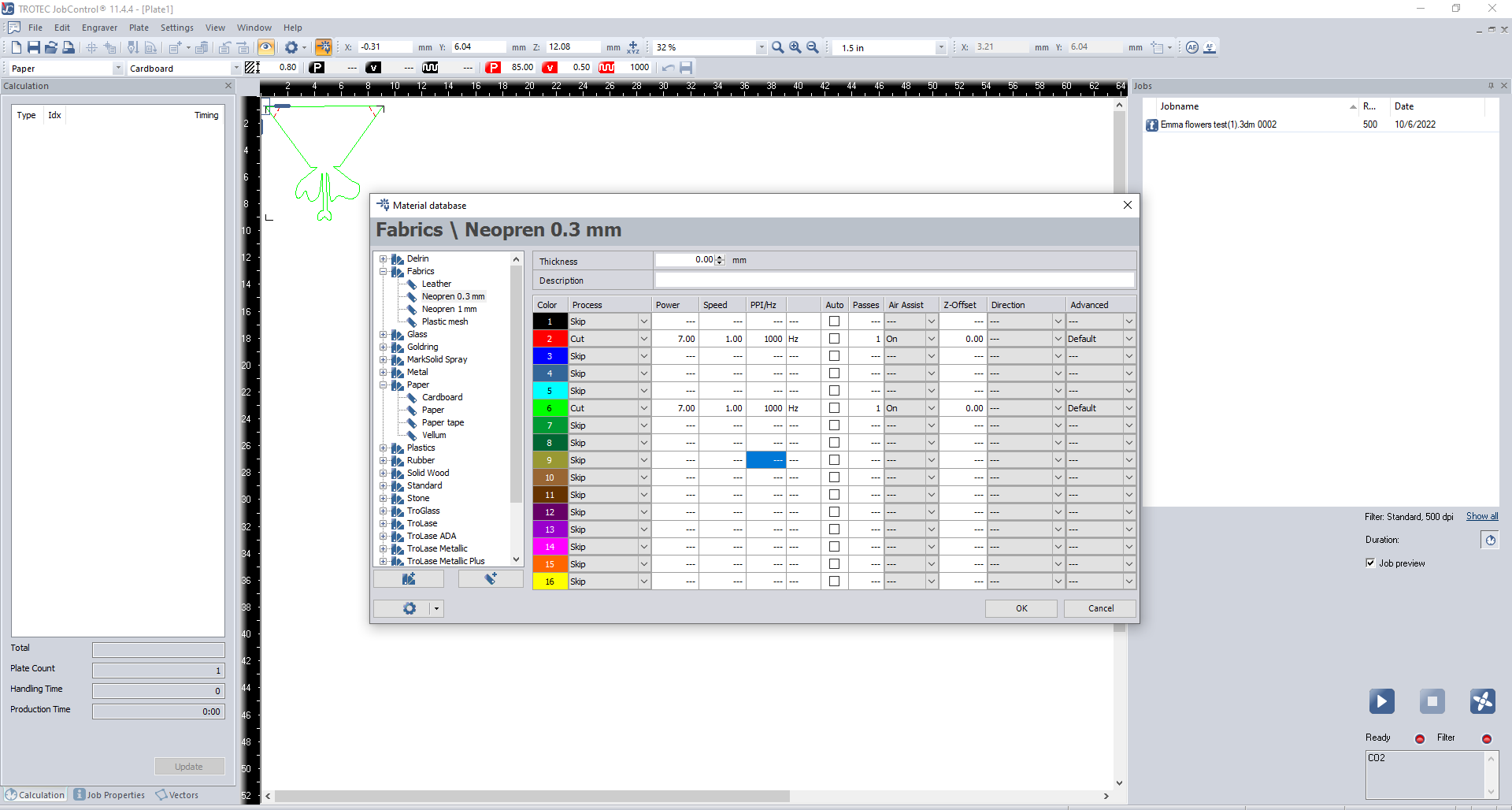
For the final cutting, we increase the power to 7 a 8, to facilitate the separation of the 60 modules.
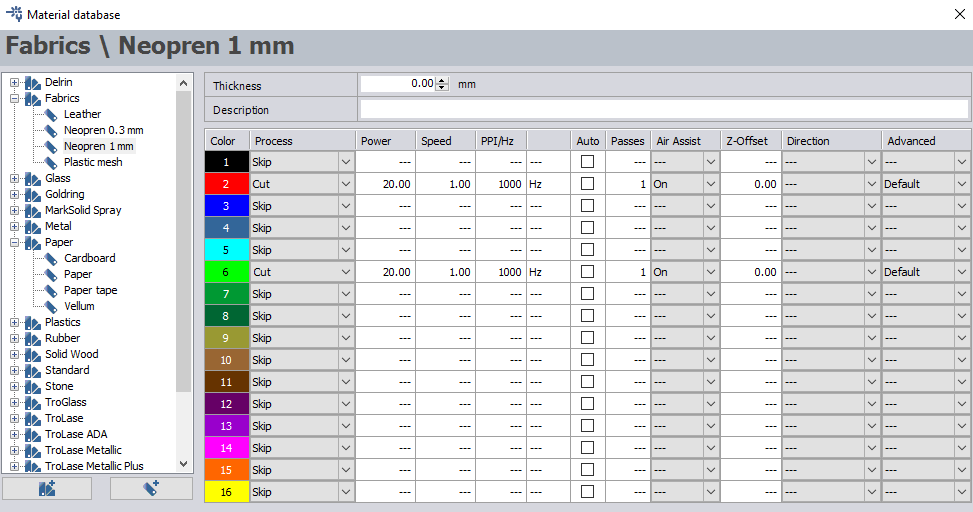
During the testing, we raised the power to get the cut modules easily. Sometimes they were joined at some point so they get frayed.
-
Position the laser in the corner, the same place as your cutting file. You could check if it fits all.
-
Press to calculate the time and to start cutting press Ready.
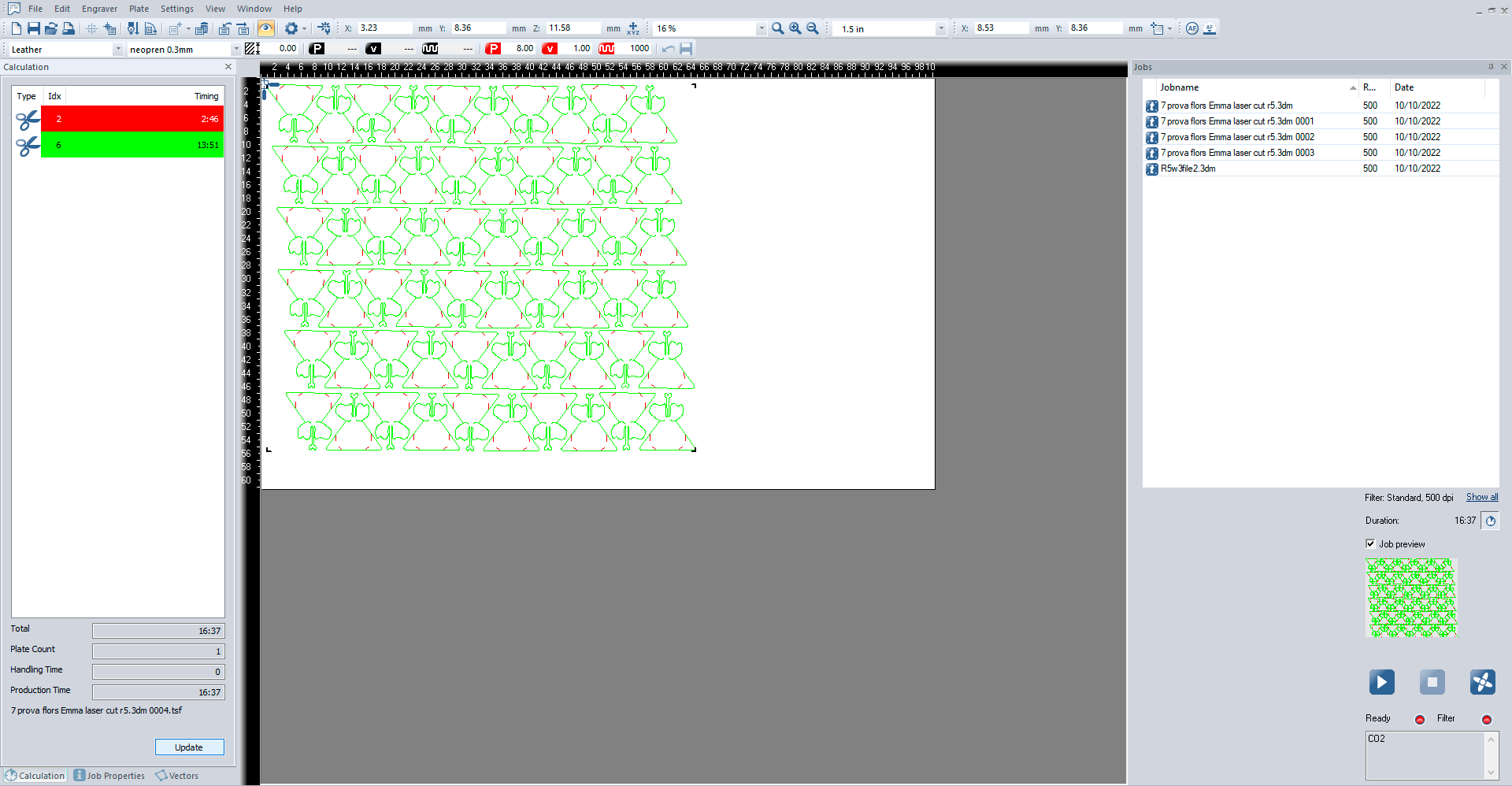
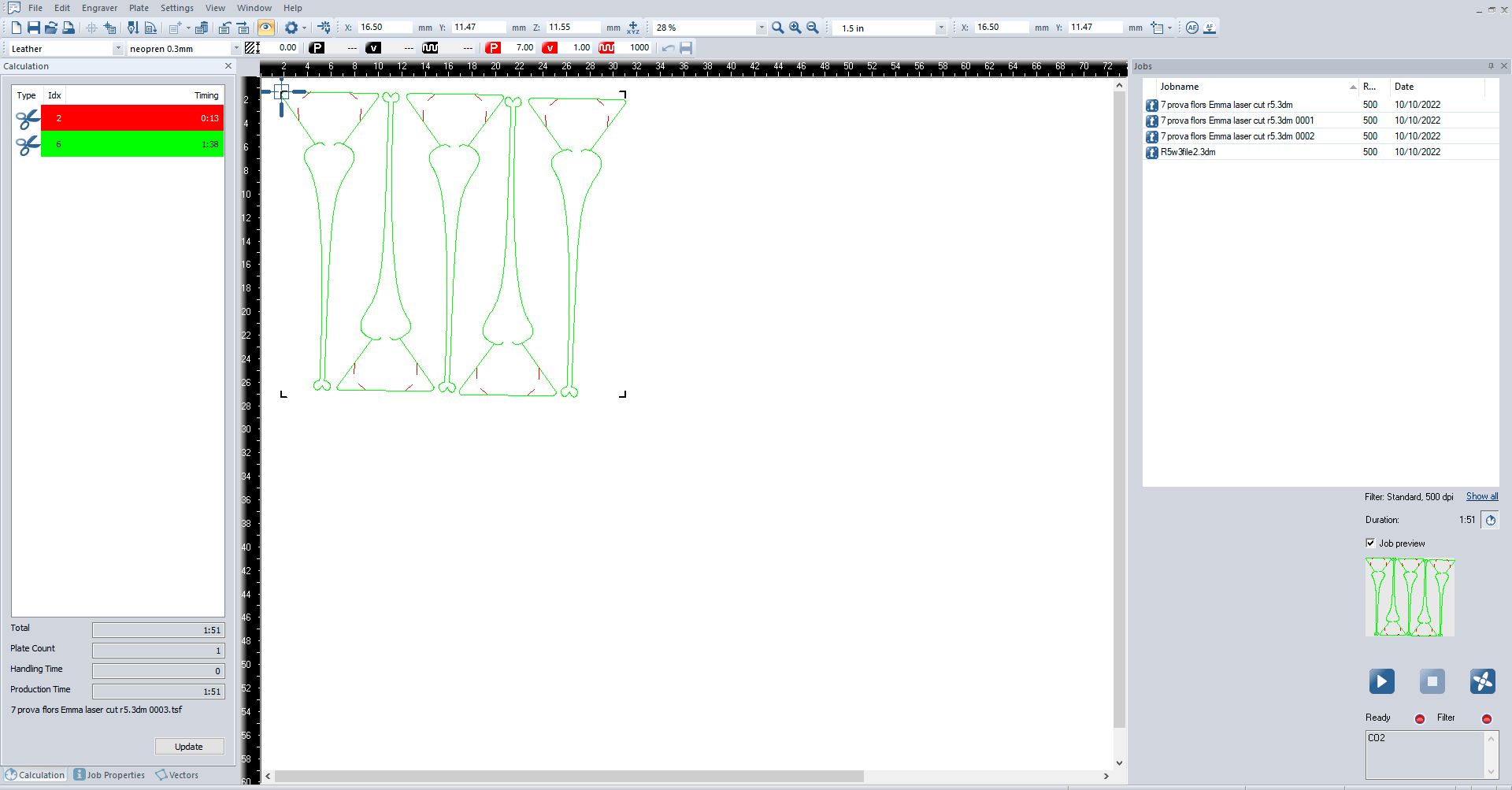

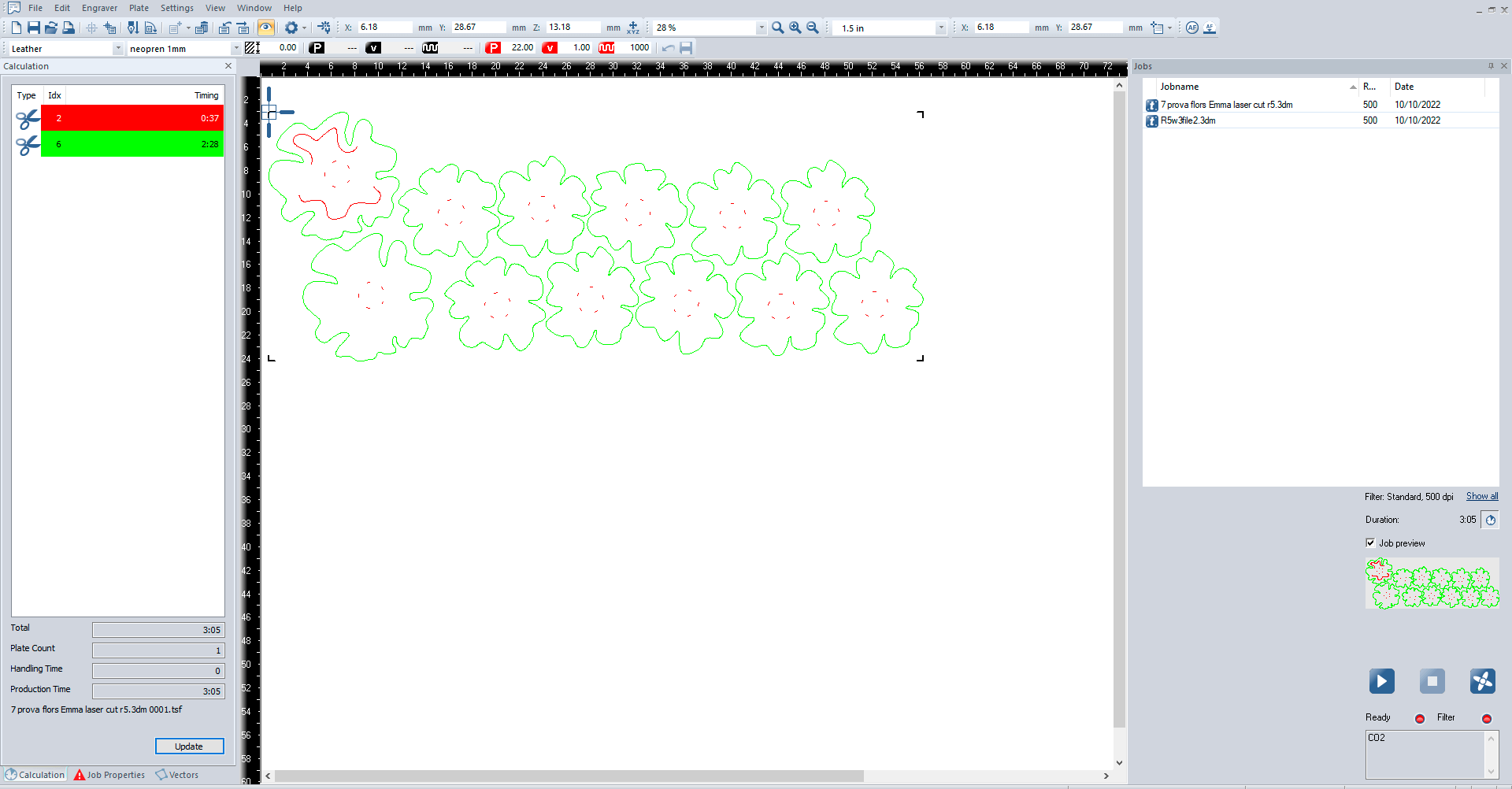
Total time of cutting is 26:55 minutes.
- While the laser cutter is working look after it in case it's burned to stop it.
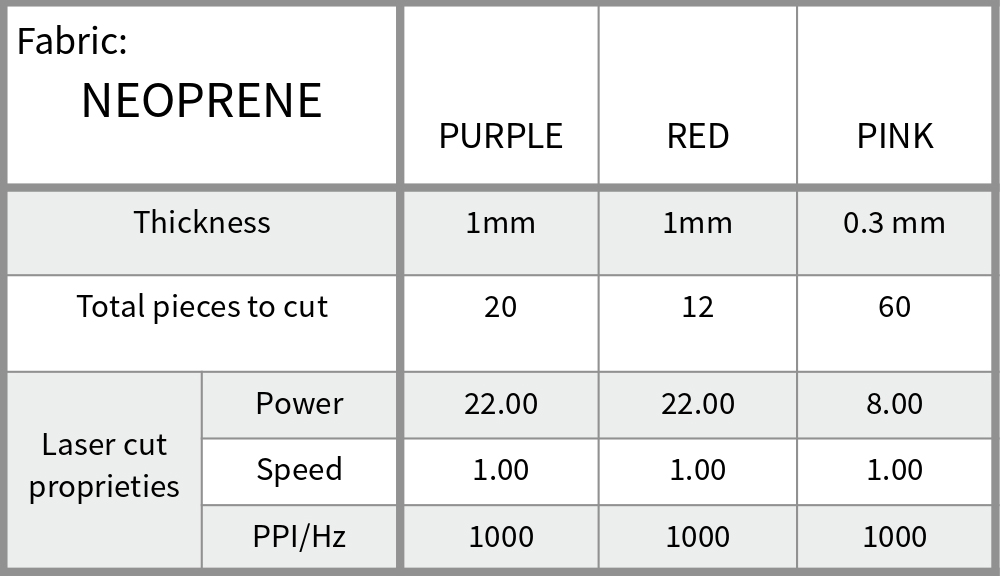
Here you could download the Rhino 5 file ready to cut
Safe laser cutting materials¶
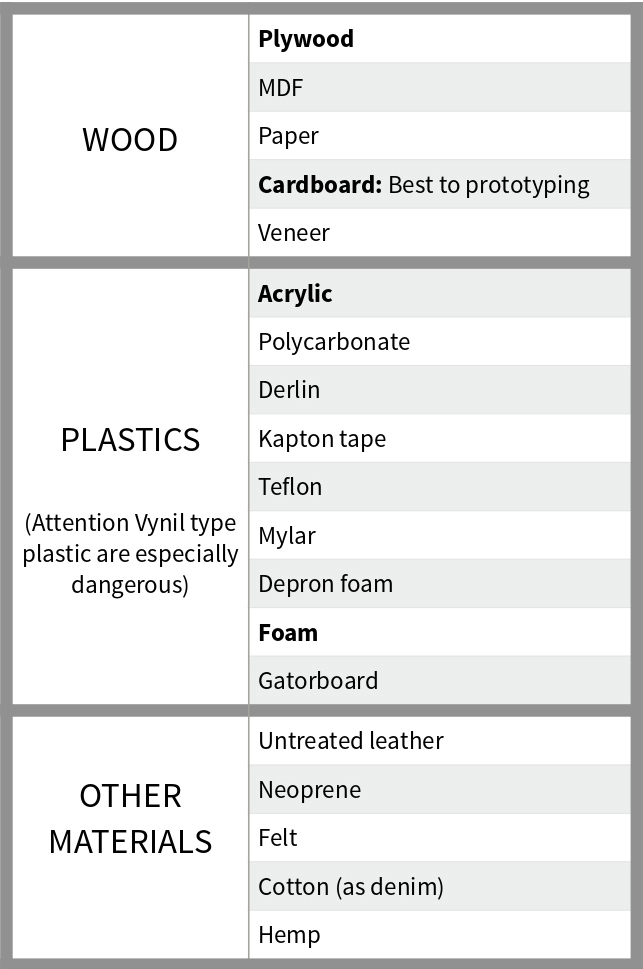
Assembly¶
Ready to join more than 90 pieces. What a challenge!
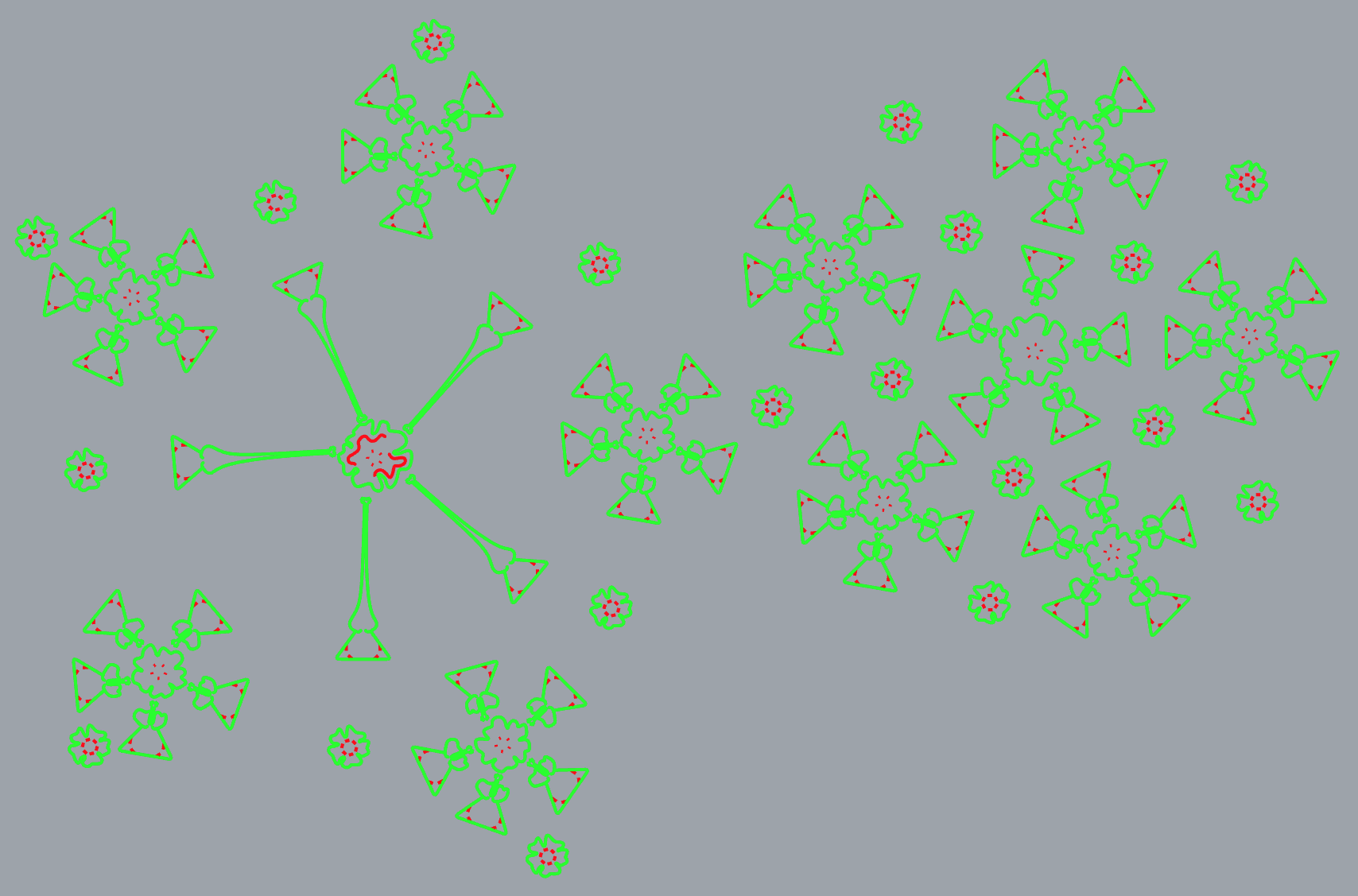
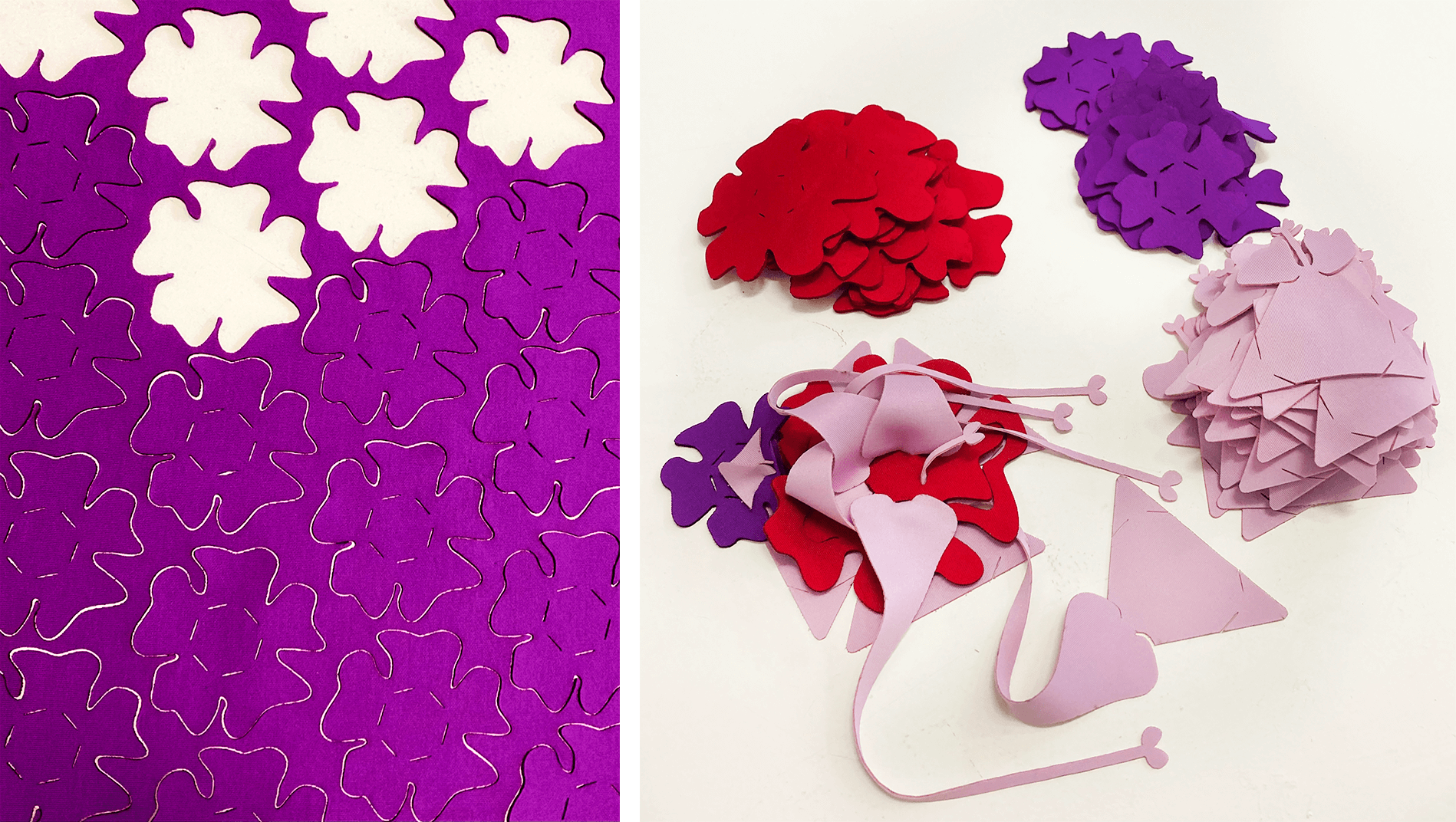
Disseny de Emma

Result¶
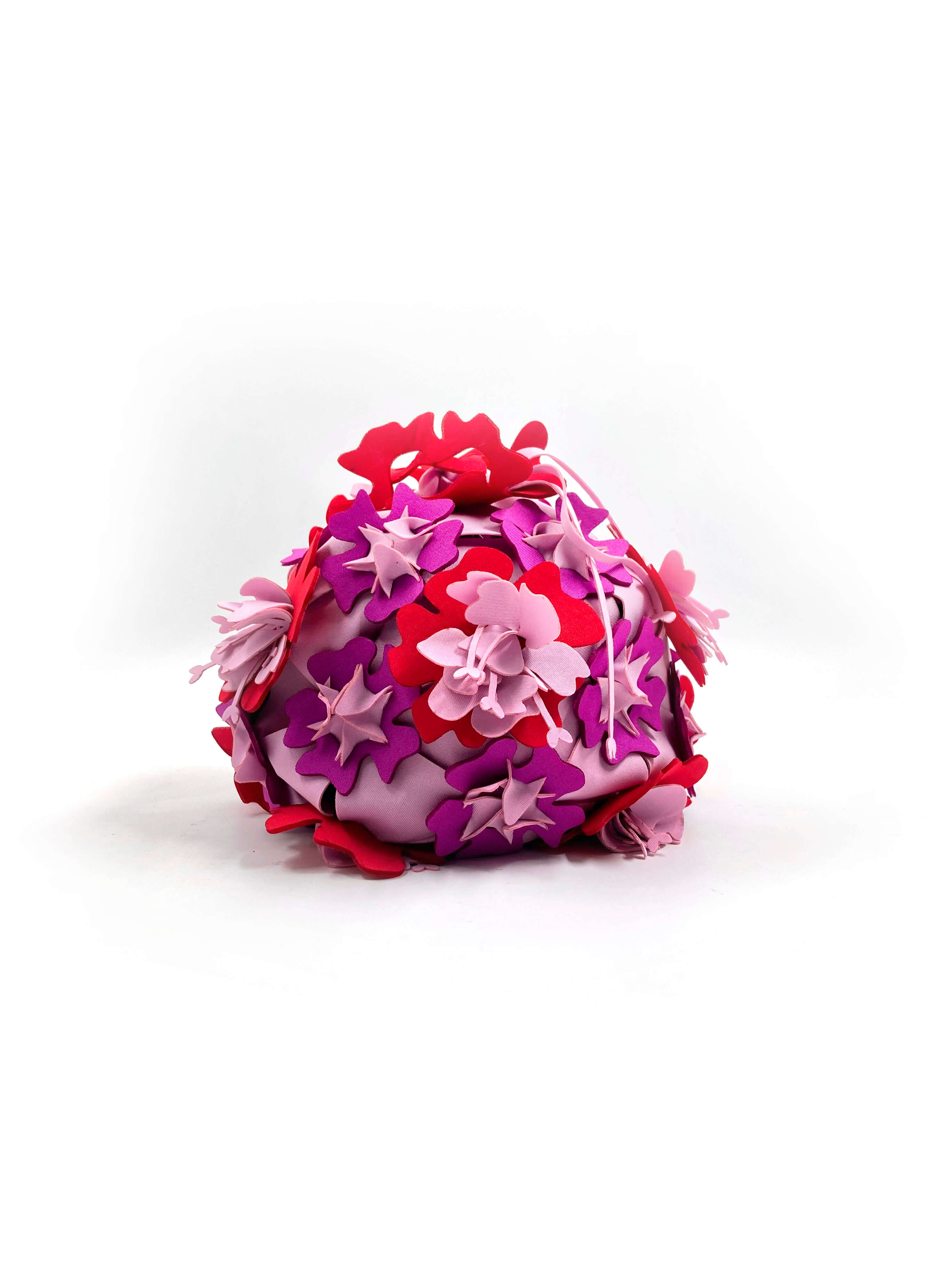

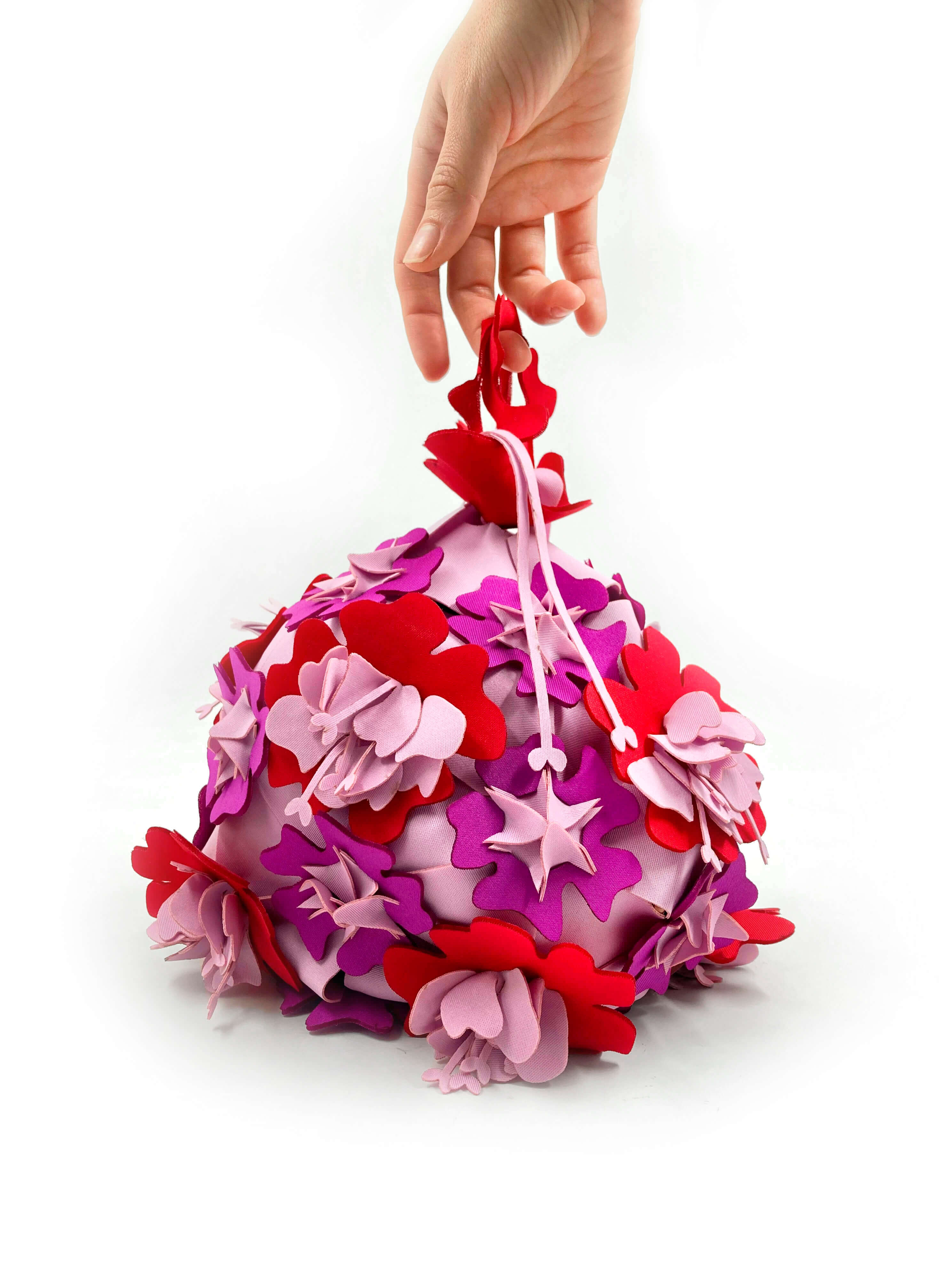
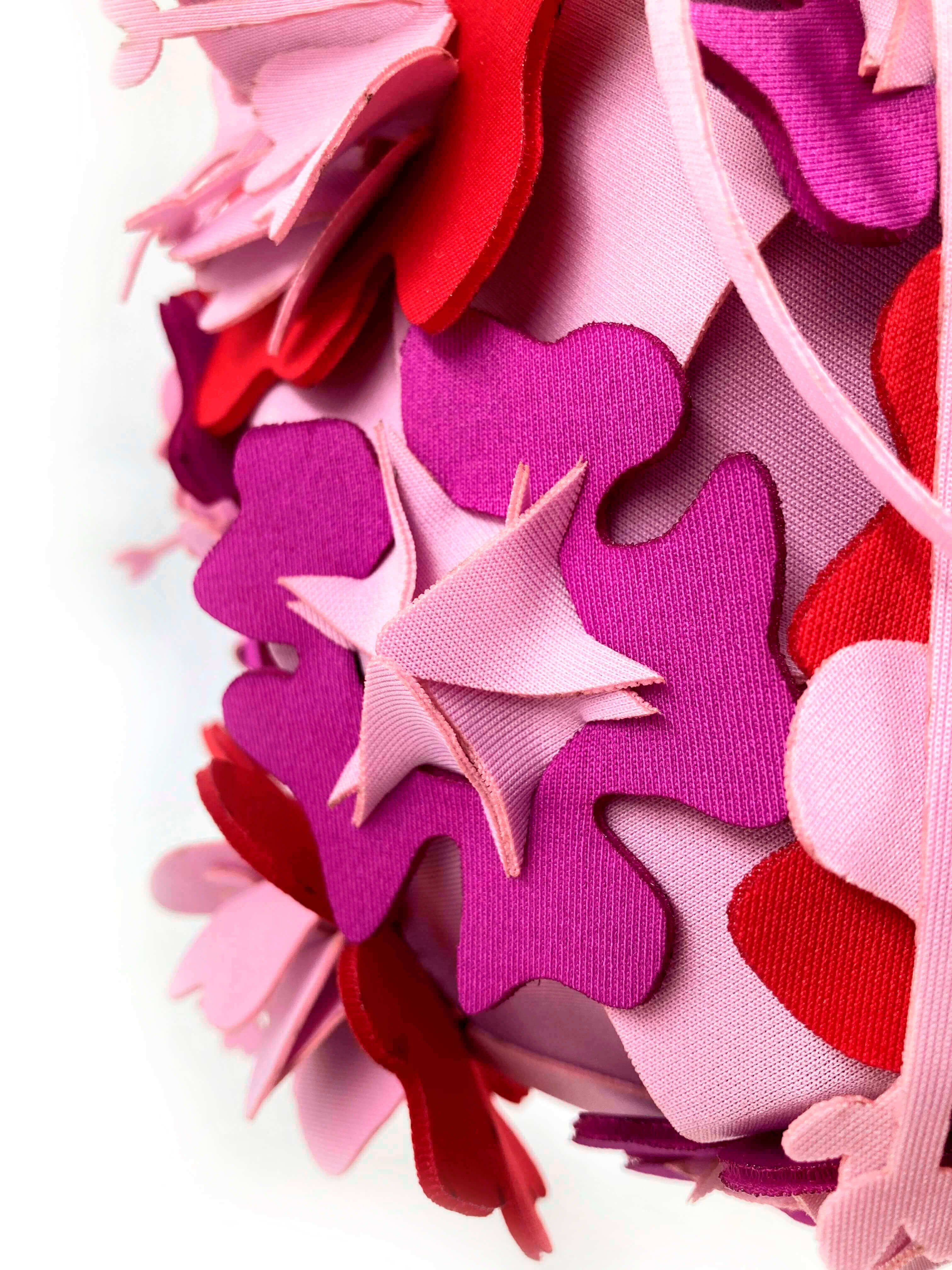
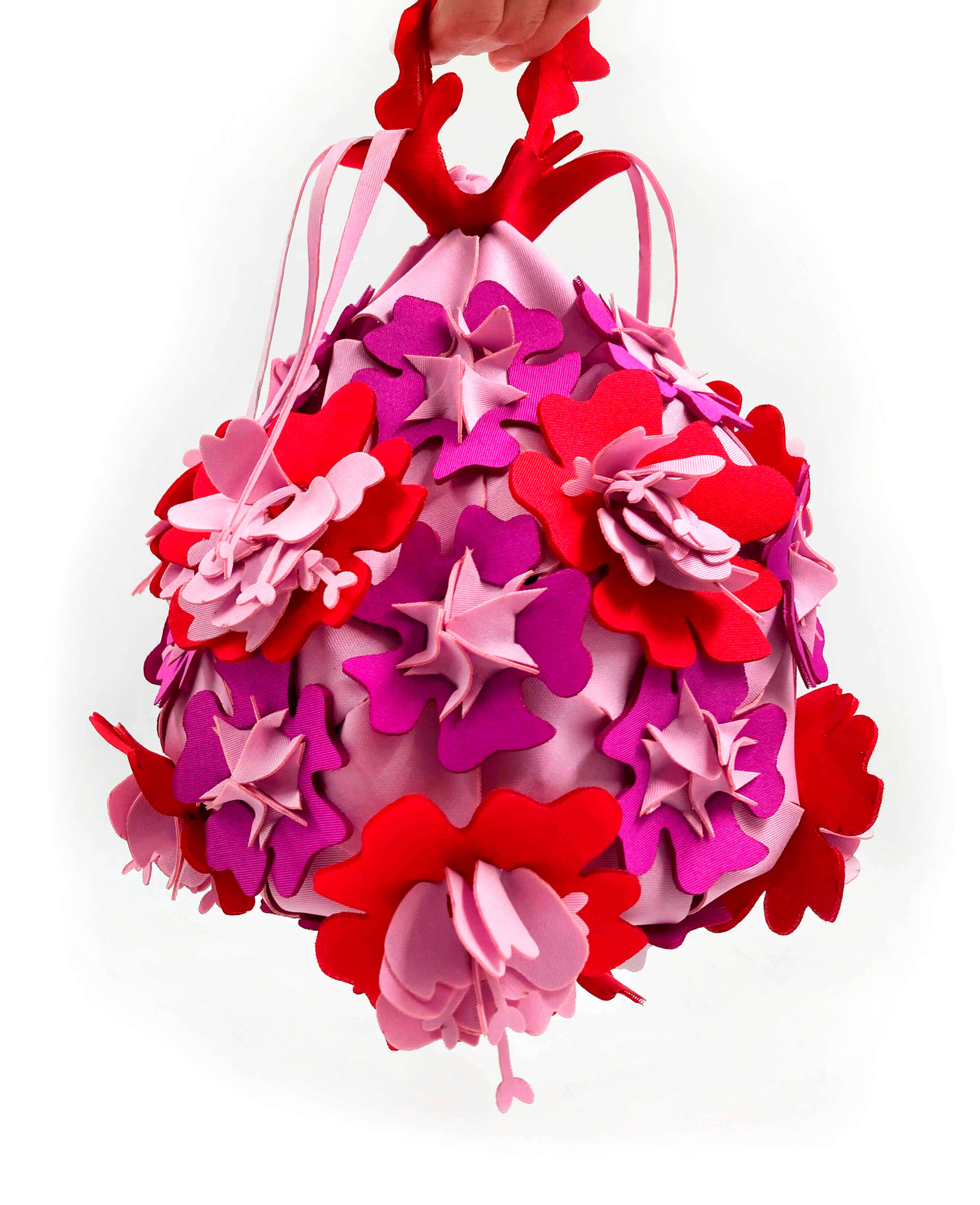
Thinking about the final project¶
After some weeks of hard work on new technics, I start thinking about what I would like to do for the final project.
One of the most facinating things that I would like to experiment with is the bioplastics and the capacity to develop new materials with different natural dyes Pantone. Additionally, the concept to develop the project with raw materials surrounding me and my hometown it's key to achieving a local product. Moreover, the technic to create volume with a mold get me an infinite concept of shapes to work in.
So maybe, the final project could be a little handbag collection 100% produced with surrounding materials. Some art pieces, without forgetting the utility of a handbag.
See you the following week! 🌺